The ergonomic Okamura Cruise & Atlas setup
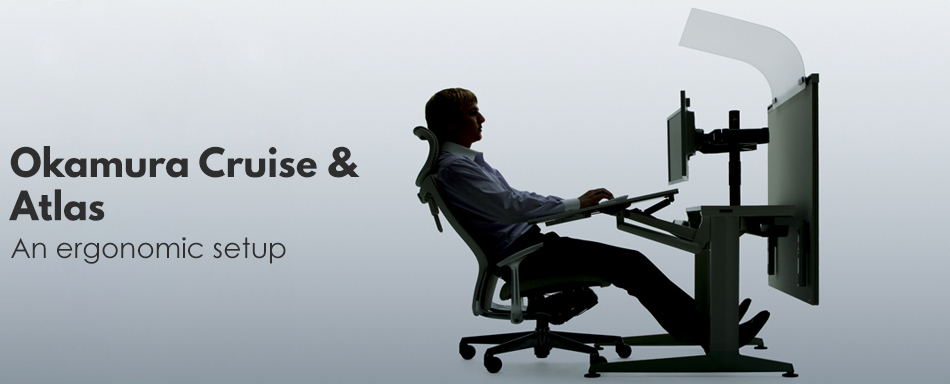
Do you demand high levels of focus and concentration from your key personnel and then expect them to maintain that for most of the working day? Is their work environment conducive to this high performance requirement? What distractions do they face ? Noise ? Light ? Colleagues ? Personal discomfort?
We at Think Furniture are always looking at new and innovative ways to help people within the working environment and we believe the new CRUISE system from Okamura may offer some important benefits.
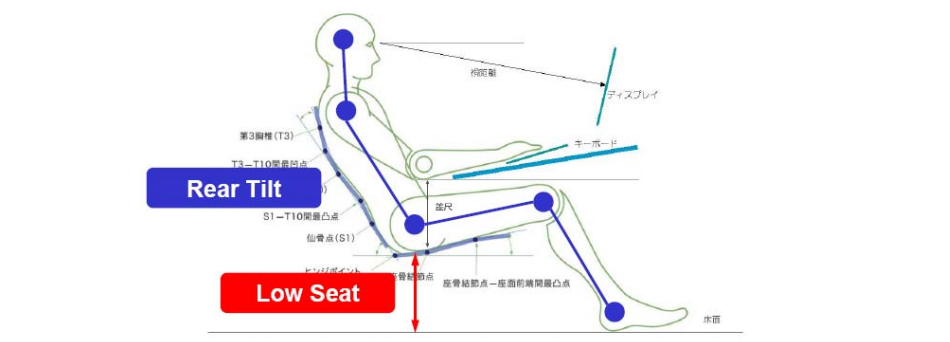
The Cruise concept was developed through collaboration
between Okamura and the ergonomics research department at
The scientific part of it is based on the following principles: Open seating angles allow better blood flow, which in turn increases oxygen and therefore a more sustainable position before discomfort is felt. Increased blood flow to the brain results in greater alertness.
Seating comparison between normal seat and Cruise seat position:
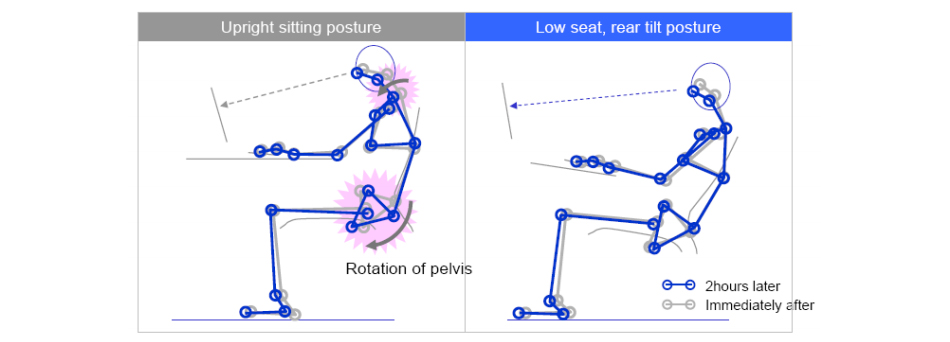
Sitting for long periods of time is not good for the human body. Humans were not designed to sit static for many hours. Conventional ways of seating, even using ergonomic chairs, do not always help the effects of gravity and muscle fatigue felt over a period of 8 hours. CRUISE differs in its ability to significantly prolong the time spent seated before discomfort and fatigue set in.
The scientists at
Body stress diversion:
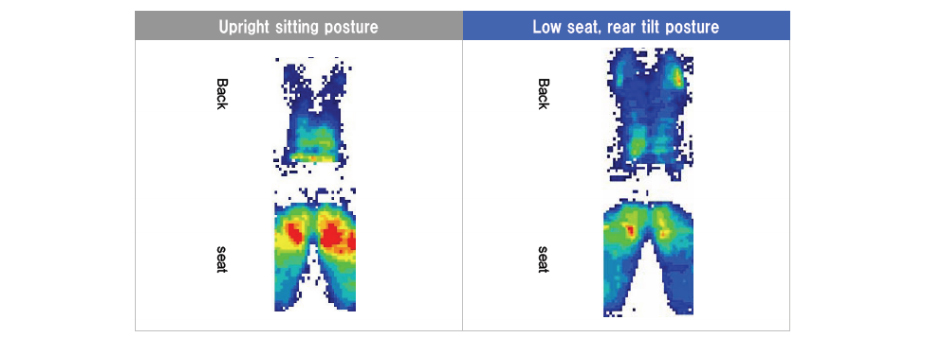
The above images show the points of pressure and movement. The more relaxed seating angle of Cruise not only helps spread the body weight over a greater contact area (high thus reducing the specific load on the seat area) it also eliminates the necessity for frequent movement and fidgeting which are often the first signs of body stress or discomfort.
Comparison of leg swelling:
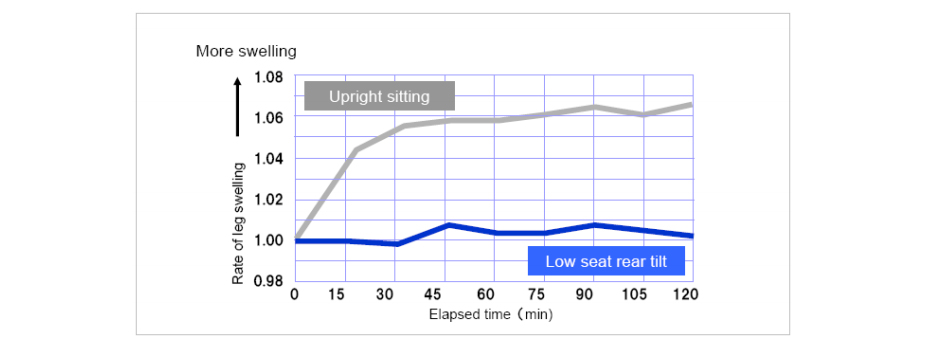
The graph clearly indicates a reduction in leg swelling when the user was placed in a Cruise type position. The position enables better blood flow rates and less constriction.
Body Stress Difference:
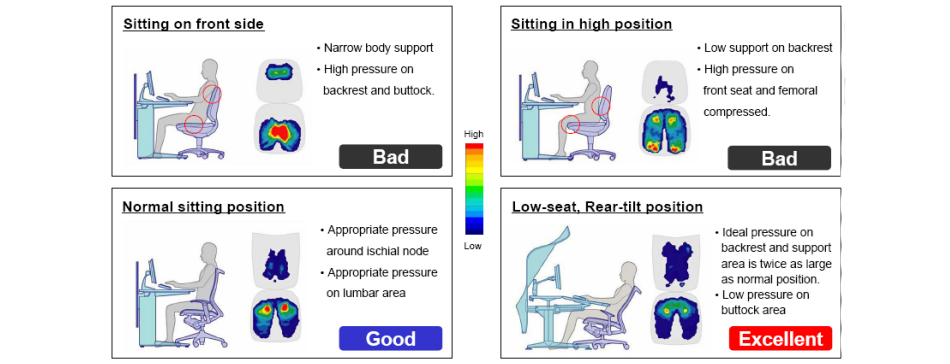
Key Points:
- Body pressure and weight distribution are an important factor in evaluating seating comfort
- Seating comfort varies by individual body type and sitting position, even when sitting on the same chair as a reference point.
- A better sitting position is achieved by ensuring body pressure gathers at or near the Ishcial node (at the bottom of the pelvis)
- Increased pressure within the femoral area causes swelling of legs and creates further discomfort.
Conclusion:
The office landscape is changing and evolving. Some companies require close team collaboration whilst others crave more ‘hotelling’ and ‘hot-desking’.
Other environments are moving back from open plan to a more cellular workplace approach. The key to any change is ensuring that it is the best fit for the organization concerned. Invariably this starts with individual’s needs and encompasses the needs of the team and so on. Products such as the Cruise from Okamura challenge the standards set in place and we at Think welcome new and innovative ideas.
For more information on this and other inspiring furniture ideas please call or e-mail us and we will do our best to offer you interesting solutions to your workplace needs. Of course we can offer the more standard options as well!
